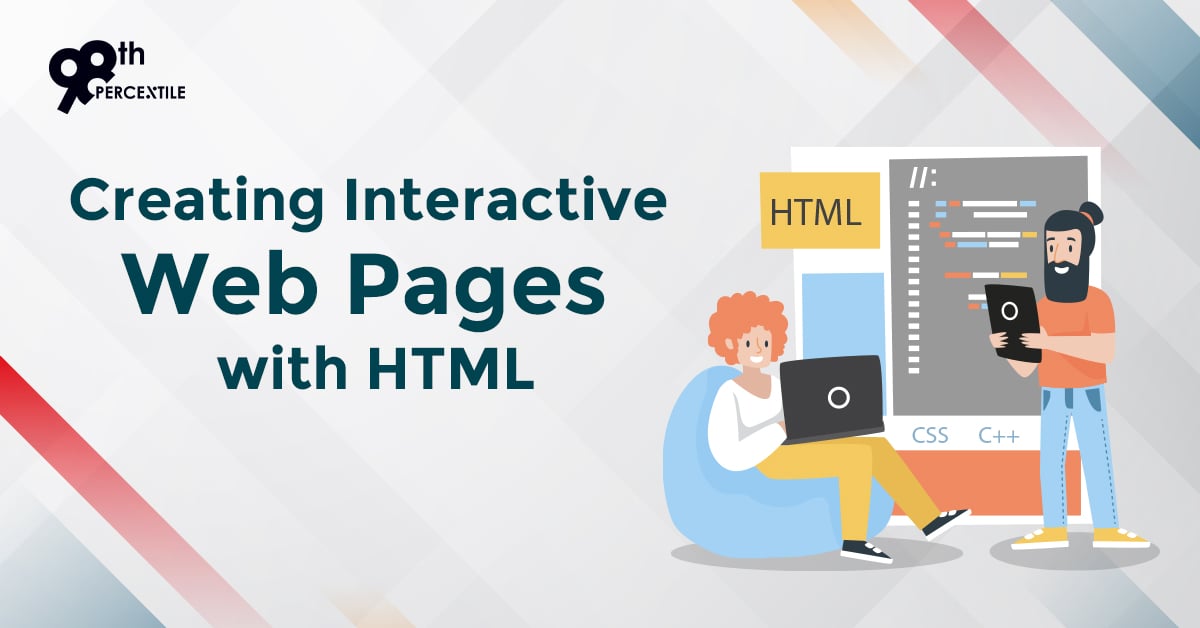
In the enormous terrain of the internet, with billions of websites, it is critical to stand out and engage your visitors successfully. One method to accomplish this is to create interactive web pages that entice people to explore your information further. Fortunately, the combination of HTML and CSS allows you to quickly create dynamic and interesting online experiences. In this article, we'll look at some basic principles and approaches for creating interactive web pages that leave a lasting impact on your audience.
HTML and CSS
HTML (Hypertext Markup Language) and CSS (Cascading Style Sheets) are the foundations of the web. HTML is responsible for organizing a webpage's information and components, whereas CSS is in charge of display and styling. They work together to create a strong partnership capable of transforming a static website into an engaging and visually appealing experience.
Buttons and Links
Buttons and links are crucial elements of a webpage's interaction. They enable consumers to traverse various areas of your website or do specified tasks. To build visually appealing buttons, use the <button> element in HTML and design them with CSS.
Free registration offer - Online Summer Camp
Code snippet:
CSS:
.interactive-button {
background-color: #007bff;
color: #fff;
padding: 10px 20px;
border: none;
border-radius: 5px;
cursor: pointer;
}
Example:
By using CSS, you can also add hover effects to buttons, changing their appearance when users hover over them. This simple addition can make the buttons feel more responsive and inviting.
Dropdown Menus
Dropdown menus are a great way to organize and present a large number of options without cluttering the main interface. You can create dropdown menus using the <select> and <option> elements in HTML.
Code :
<label for="cars">Choose a car:</label>
<select id="cars">
<option value="volvo">Volvo</option>
<option value="audi">Audi</option>
<option value="bmw">BMW</option>
<!-- Add more options here -->
</select>
Example:
You may use CSS to modify the font, color, and background of the dropdown menu, giving it a personalized design that matches the theme of your website.
Image Sliders
Image sliders or carousels are a popular way to display multiple images or content in a compact space, allowing users to interact and cycle through the items. You can create a simple image slider using HTML, CSS, and a bit of JavaScript.
Code:
<div class="image-slider">
<imgsrc="image1.jpg" alt="Image 1">
<imgsrc="image2.jpg" alt="Image 2">
<imgsrc="image3.jpg" alt="Image 3">
<!-- Add more images here -->
</div>
CSS:
.image-slider {
display: flex;
overflow: hidden;
}
.image-slider img {
width: 100%;
transition: transform 0.3s ease;
}
/* JavaScript (not shown here) can handle sliding functionality */
Using CSS transitions, you can add smooth sliding animations when transitioning between images.
Hover Effects
Hover effects are a simple yet effective technique to include interaction into your web pages. When a user hovers over an element, its appearance may change, giving visual feedback and improving the user experience.
Code:
<div class="hover-effect">
<p>Hover over me</p>
</div>
CSS:
.hover-effect p:hover {
color: #ff4500;
font-weight: bold;
}
Example:
Accordions and Tabs
Accordions and tabs are handy for organizing material and displaying it in a collapsible, interactive format. This is very useful when you have a lot of information to present in a little space.
Code:
<div class="accordion">
<button class="accordion-btn">Section 1</button>
<div class="accordion-content">
<p>Content for section 1 goes here.</p>
</div>
<button class="accordion-btn">Section 2</button>
<div class="accordion-content">
<p>Content for section 2 goes here.</p>
</div>
</div>
CSS:
.accordion-btn {
background-color: #f1f1f1;
cursor: pointer;
padding: 10px;
width: 100%;
text-align: left;
border: none;
border-bottom: 1px solid #ccc;
}
.accordion-content {
display: none;
}
/* JavaScript (not shown here) can handle accordion functionality */
Using CSS, you can make the accordion's sections look visually appealing and create smooth transitions when opening and closing the content.
Conclusion
HTML and CSS are strong technologies that, when used correctly, can convert static web pages into interactive, engaging experiences. You may build a dynamic and immersive environment by including buttons, links, dropdown menus, image sliders, hover effects, accordions, and tabs that encourage users to explore and engage with your material. Remember to test your interactive components on several devices and browsers to provide a consistent experience for all users. So, unleash your imagination and create appealing interactive web pages that have a good and long-lasting influence on your audience. Happy coding!

 Students/Staff
Students/Staff Parents
Parents ElevatEd
ElevatEd


-Nov-18-2025-03-57-47-3267-AM.png?width=360&length=360&name=401x226%20(6)-Nov-18-2025-03-57-47-3267-AM.png)



-Jul-22-2025-03-16-52-8797-AM.png?width=360&length=360&name=401x226%20(6)-Jul-22-2025-03-16-52-8797-AM.png)






